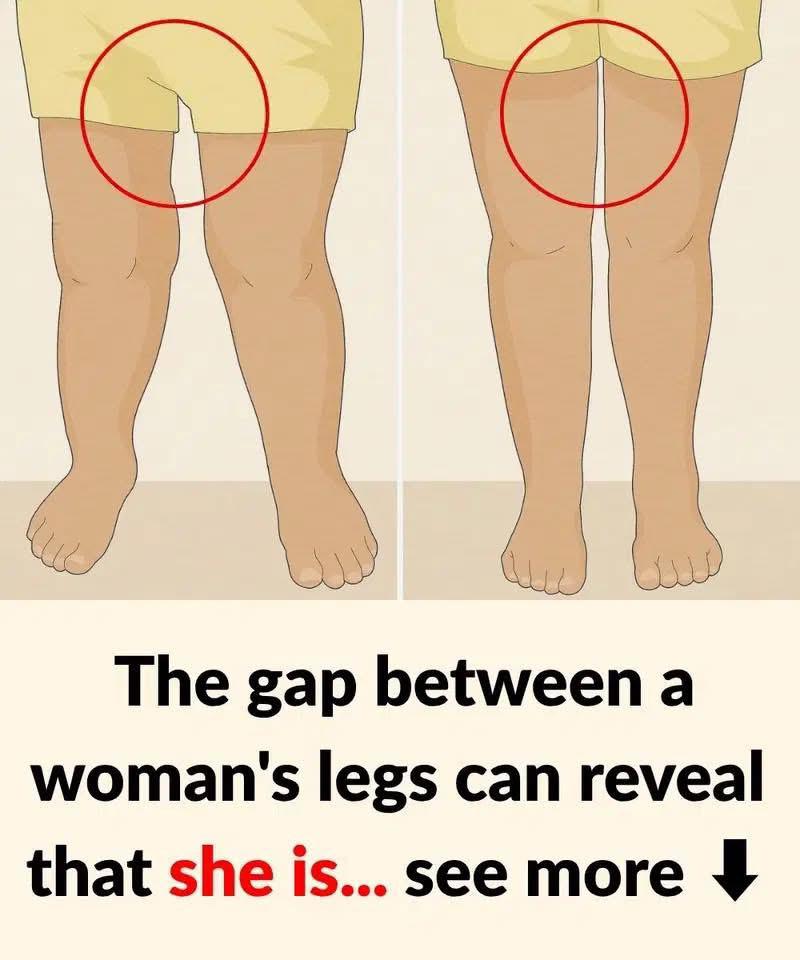
Introduction
In recent years, the term “thigh gap” — referring to the space between the upper thighs when a woman stands with her feet together — has gained prominence in fashion, social media, and popular culture. Some claim that it reflects health, attractiveness, or even moral character. But is there any truth to that? What does the gap between a woman’s legs actually reveal?
1. The Anatomy of a Thigh Gap
The presence or absence of a thigh gap is primarily determined by skeletal structure, not weight or fitness level. Key anatomical factors include:
- Pelvic width: A wider pelvis tends to create more space between the upper thighs.
- Angle of the femur (thigh bone): The natural angle at which the femur meets the hip can impact leg spacing.
- Muscle and fat distribution: Genetics determines where fat is stored and how muscle is shaped.
Thus, a thigh gap is not a reliable indicator of health, athleticism, or body fat percentage.
2. Myths and Misconceptions
Myth 1: A thigh gap means a woman is fit.
Reality: Some very fit, strong women do not have thigh gaps. Conversely, some women with low muscle tone may have them naturally due to their bone structure.
Myth 2: A thigh gap makes someone more attractive.
Reality: Beauty standards vary dramatically across cultures and eras. Fixating on a single physical trait is not only superficial but often driven by unhealthy societal expectations.
Myth 3: Women should strive for a thigh gap.
Reality: Pursuing a thigh gap can lead to eating disorders, over-exercising, and body dysmorphia. It’s not a realistic or healthy goal for most people.
3. Social Media and the Rise of Unrealistic Body Ideals
The “thigh gap trend” became widely known during the 2010s, especially on platforms like Tumblr and Instagram. Many influencers and celebrities posted edited or carefully posed photos that emphasized their thigh gaps, leading younger audiences to see it as a beauty standard.
Photoshop, filters, and specific posing techniques make it difficult to distinguish natural body features from manufactured ones. This leads to:
- Unrealistic comparisons
- Lowered self-esteem
- Increased risk of mental health issues
4. The Dangerous Consequences of Body Fixation
An obsession with the thigh gap has contributed to:
- Eating disorders such as anorexia nervosa and orthorexia
- Over-exercising, sometimes to the point of injury
- Cosmetic procedures to surgically remove fat in inner thighs
- Depression and anxiety linked to body image
It’s important to recognize how these ideals hurt people — especially teenage girls — who are still developing their identities and self-worth.
5. Empowering a Healthier Perspective
Rather than measuring beauty or health by arbitrary traits like thigh gaps, we should promote:
- Body diversity: Celebrate all body types, including curvy, lean, athletic, tall, short, etc.
- Function over form: A body that moves well, feels good, and is cared for is more important than one that fits a fleeting ideal.
- Mental and physical well-being: Eating nourishing foods, exercising for joy or strength, and practicing self-love should be the priority.
6. What the Gap Between a Woman’s Legs Actually Reveals
To answer the original phrase — “The gap between a woman’s legs can reveal that she is…” — the only accurate and responsible conclusion is:
…built a certain way.
That’s it. It reveals aspects of bone structure and genetics — not health, morality, intelligence, confidence, or worth.
Conclusion
The fixation on the thigh gap is an example of how society often places unrealistic and harmful expectations on women’s bodies. Rather than viewing it as a standard to strive for, it’s time we dismantle such narrow ideals and embrace body diversity, self-respect, and genuine health.